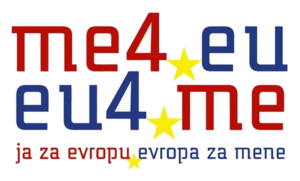Negotiations in Chapter 16 – Taxation were officially opened At the Intergovernmental Conference on Accession of Montenegro to the European Union, held on 30 March 2015.
There is no obligation to harmonize all types of taxes within the Union, and tax harmonization is achieved through the coordination of the tax systems of EU Member States in order to avoid national tax measures that can negatively affect the functioning of the EU internal market. Each Member State has the right to retain its own tax system and even introduce new tax forms, with the obligation to align some of its parts (tax rate, base, etc.) with European regulations. Tax revenues, as state revenues, are of great importance in process of creating the state budget and taking over the country’s strategic obligations in solving certain economic and social problems.
Member States unanimously decide on issues in the field of taxation, which additionally protects their national autonomy.
INDIRECT TAXES – IN THE COMPETENCE OF THE EUROPEAN UNION
Indirect taxes are taxes that are levied in connection with the production, consumption or exchange of goods.
Indirect taxes are related to Value Added Tax (VAT) and Excise on Tobacco Products, Alcohol, Energy and Electricity, which directly affect the free movement of goods and the freedom to provide services. Hence, harmonization at EU level is needed, because changes and differences in VAT or excise taxes for these products can easily impair market competition.
Value Added Tax (VAT) was introduced in 1970th as general tax, applicable to all stages of production and distribution of goods and services. The minimum VAT rate in the EU is 15% and is valid for most products and services. The differences exist between individual Member States and range from 15% in Luxembourg, Cyprus (17%) and Malta (18%), at a rate of 19% in Germany to the highest rates of 25% in Denmark and 27% in Hungary.
Rates lower than average are permitted for products and services that are not competitive with products and services from other Member States, such as, for example, medicines and the like. Taxes and acquis in the EU related to excise duties include rules with the aim of harmonization for three categories of products: tobacco products, alcoholic beverages and energy products. These regulations, inter alia, define minimum tax rates for each type of product. Minimum tax rates for fuel, natural gas, electricity and coal are in the interests of fair competition and are a means of promoting energy efficiency as well as the use of environmentally friendly fuels. However, EU-level regulations are flexible enough to allow specific national circumstances. Member States may impose special duties on other categories of products whose use may not create obstacles to the free movement of goods outside the territory of that State.
DIRECT TAXES – IN THE COMPETENCE OF THE MEMBER STATE
Direct taxes are taxes that impose the economic ability of the taxpayer by directly affecting his wealth or income. Direct taxes include income taxes, ie income, property taxes and taxes on the use of goods.
Most of the provisions relating to these types of tax are determined by the Member States themselves, respecting the four freedoms contained in the Treaty on the European Community (freedom of movement of goods, services, persons and capital).
The acquis in the field of direct taxes relates mainly to corporate income taxes. The aim of the EU is to prevent harmful tax competition among member states and to support the principle of free movement of capital. The lack of these rules in the past has led to excessive tax incentives in some member states, with the aim of attracting foreign investment, often at the expense of other EU countries where the investment was economically viable. In order to eliminate harmful tax measures, Member States are bound by the Code of Conduct on Taxation of Operations. EU common rules ensure compliance of tax rates for cross-border payments of interest, copyrights and cross-border sales of goods and services within the enterprise (so-called transfer prices)
CHANGES IN MONTENEGRO
By the time of accession to the European Union, Montenegro must establish a system of exchange of VAT information between the competent authorities, which allows the exchange of VAT data between the Member States through a common information network, ie that such data may be obtained by any member of the Union, its tax administration, as well as taxpayers. It is also necessary to provide for the supervision of the movement of excise goods, or its electronic monitoring, especially in situations where the payment of excise tax and the exchange of information between the competent authorities of the Member States is postponed.
A system of information exchange between the competent authorities of the Member States must also be provided for direct taxes.


